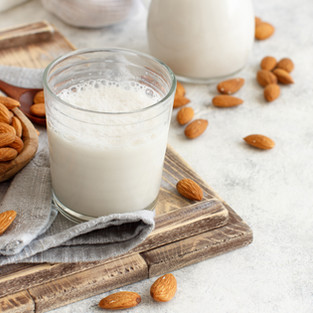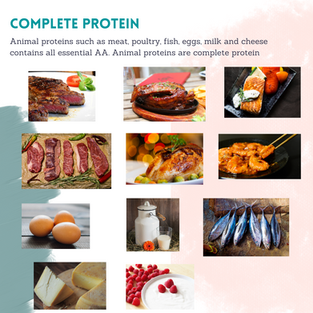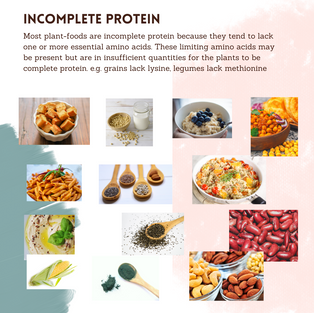Protein - The Sexiest Macronutrient
- Vicky Sham

- Jan 27, 2021
- 6 min read
Updated: Mar 1, 2021
The Sexiest Macronutrient
Do you have a favourite macronutrient? Is it carbohydrate, fat or protein? Carbs and fats have been my favourite for several years because they are relatively easy to understand, have a lot to do with exercise fuelling and weight management. If you are a runner, you may appreciate the importance of fuelling with the right amount of carbohydrates to improve performance. If you are into weight management or intermittent fasting, you may have tried a high fat low carb ketogenic diet for weight loss or mental clarity.
But what about protein? It is probably the sexiest macronutrient, because everybody needs it! Whether you are looking to gain muscle mass or lose body fat, the advice is always to eat more protein. I am talking about double the RDA amount of protein but I will share more in upcoming blog post on how much protein we need. Whether you are on a high carb or a high fat diet or neither, an omnivore, a carnivore, a vegetarian, or a vegan, you still need protein to survive and thrive.
We All Need Protein Protein isn't just about building muscles and preserving lean body mass. We absolutely need protein to maintain health, to stay away from diseases and to ensure we age healthily.
Let's take a look at the following - why protein is important, what are its building blocks, where we can get protein, and how vegetarians/ vegans can achieve complete protein by complementing foods.
Why is protein important? Protein is found in every cell and tissue of our body. We need protein for growth (making new cells), repair (recovering from an injury or illness), and maintenance of health (to fight against infection and diseases). Proteins are fundamental to the structure and functions of our body, they are present as
Collagen and keratin, the structural material in our tissue, tendons, hair, nails and bones
Antibodies which provide immunity against virus and bacteria
Enzymes that assist thousands of metabolic reactions
Hormones such as insulin and glucagon help regulate our blood glucose level
Blood transport molecules e.g. hemoglobin that help supply oxygen to our cells
Glucose transporters to move glucose to our cells.
Amino Acids - The Building Blocks Every protein molecule is made up of amino acids. Amino acids are the building blocks that link together to form peptides and polypeptides chains, e.g. collagen, insulin, growth hormones. A protein is defined as one or more polypeptides folding into a specific conformation to achieve a particular function. Hemoglobin, the iron-containing oxygen carrier in our blood, has one of the most fascinating protein structures ever discovered. It is made up of four subunits of polypeptides intricately folded into a three dimensional structure important, allowing it to bind to oxygen molecules for transportation. Click here to see the hemoglobin structure.
Branched Chain Amino Acids
Have you ever taken the supplement branched chain amino acids? BCAA contains the amino acids valine, leucine and isoleucine. When you take BCAA, no digestion is needed as these amino acids are already in the most basic units for your body to use. Leucine, in particular, plays a key role in triggering muscle protein synthesis post exercise. Many athletes take BCAA during and post exercise to reduce muscle soreness, improve recovery, and stimulate muscle protein synthesis. But you will see some research still questions the efficacy of BCAA supplementation to increase muscle protein synthesis (4, 5, 6).
The takeaway is that you should always aim to get your basic nutritional requirements from your meals. Supplements (whether BCAA, protein powders or many others) can be helpful when you have additional requirements in specific circumstances, for example, when it is not practical for you to sit down for a full recovery meal immediately after a race. Real food like meat, fish, poultry, eggs, dairy and plants come with nutrient package of carbohydrates, fats, vitamins and minerals to help facilitate numerous metabolic processes in our body. Supplements are expensive, so use them wisely and specifically, they are not meant to be and should not be taken as meal replacements (though maybe the manufacturers and the distributors don't mind that).
Essential Amino Acids There are 21 amino acids in protein synthesis. Humans can make 12 of these, which are termed non-essential or dispensable amino acids. The remaining 9 are essential amino acids or indispensable amino acids, these have to be obtained from the food we eat as our body cannot make them. Essential amino acids are available from foods such as meat, poultry, fish, eggs, dairy, nuts, seeds, legumes and grains.
Note the amount of protein and the quality of the amino acids we obtain from animal and plant-based foods vary. You can read about bioavailability of protein foods in this blog The nine essential or indispensable amino acids are phenylalanine, valine, tryptophan, threonine, isoleucine, methionine, histidine, leucine and lysine. The rest are non-essential or dispensable amino acids: alanine, aspartic acid, asparagine, glutamic acid, serine and selenocysteine. Conditionally essential or indispensable amino acids are conditional on the amount of essential amino acids available, otherwise, they need to be obtained from food when there is not enough essential amino acids for our body to synthesis them.

Complete and Complementary Proteins Animal protein sources such as meat, poultry, fish, seafood, eggs and diary are complete because they contain all essential amino acids in the proportions for the human body to function.
Plant based sources such as legumes - beans, lentils and nuts are incomplete as they lack one or more of the essential amino acids.The four most common limiting amino acids are lysine, methionine, threonine and tryptophan.
Soy (tofu, tempeh) and quinoa are considered high quality or almost complete protein. All essential amino acids may be technically present in soy and quinoa but the quantities are insufficient to qualify them as complete protein. For instance, soy is deficient in methionine and contains antinutrients, e.g. enzyme (chymotrypsin and trypsin) inhibitors and lectins, hindering the digestion and absorption of the nutrients in soy protein. Cereal grains such as wheat, rice, maize and quinoa are relatively short of lysine.
That said, vegans and vegetarians can obtain complete protein by combining incomplete proteins. For example, legumes such as beans, lentils and peas have plenty of isoleucine and lysine but low in methionine and tryptophan. Whereas grains such as rice and wheat are higher in methionine and tryptophan but short in isoleucine and lysine. Corn (or maize) lack lysine and tryptophan and can be combined with soy.
Real Life Examples
Pay a little attention and you will notice food combining in our everyday dishes:
Bean burgers
Pita bread with hummus
Corn tortilla with beans, tofu or tempeh
Peanut butter sandwich
Vegetable stir-fry with tofu, cashew and sesame
Can you think of any further examples?
How Much Protein in Animal and Plant Foods?
What about the quantity and quality of your dietary protein? How much protein can you get from a portion of meat vs a portion of plant-based food? Have you ever considered how much beef or quinoa you need to eat to get the same amount of protein?

What does 100g protein looks like in different food?
Let's say 100g protein, because that's roughly what I am targeting right now. I can choose from a wide variety of food but for comparison sake, let's say I can only eat beef, salmon, or quinoa.
This is what 100g protein of food looks like, based on USDA Food Database:
- Beef steak (braised) - 325 grams and 814 kcal.
- Sockeye Salmon - 471 grams or 4 fillets for 667 kcal
- Quinoa - a whopping 2kg and 2700 kcal!
Of course, nobody eats like that, it's just a visualisation tool to help us appreciate the protein density in different foods. There is also protein quality, which I will address in upcoming posts.

Don't Take the RDA for Granted
How do you work out how much protein we need? Apparently the Recommended Daily Allowance (0.8g per kg of bodyweight or 56g for a 70kg sedentary male) is not necessarily the amount you need for optimal health, for muscle gain or weight loss and has different implications for athletes. Are you worried about eating too much protein, or too much meat? Does eating too much meat or protein have a negative impact on kidney function?
Follow my upcoming posts...."How much protein do we need?" and Protein Quality
Get A Free Consultation Hope you enjoy my post. If you would like to share any ideas about protein or interested in health coaching, reach out to post your comment or book a free consultation. You can also read my take on health coaching.
References 1. Marengo-Rowe, A. J., (2006), Structure-Function Relations of Human Hemoglobins, Baylor University Medical Center Proceedings, 19:3, 230-245 DOI: 10.1080/08998280.2006.11928171
2. Amino Acid
3. Special Structure and Function of Proteins
https://www.britannica.com/science/protein/Special-structure-and-function-of-proteins
4. Wolfe, R.R., (Aug 2017, Branched-chain amino acids and muscle protein synthesis in humans: myth or reality?, J Int Soc Sports Nutr, 4 (30) https://doi.org/10.1186/s12970-017-0184-9
5. The Truth About BCAA
6. VanDusseldorp, T.A. et al, (Oct 2018), Effect of Branched-Chain Amino Acid Supplementation on Recovery Following Acute Eccentric Exercise, Nutrients, 10 (10), 1389 https://doi.org/10.3390/nu10101389
7. Lopez, M.J., Mohuiddin, S. S., (2020), Biochemistry, Essential Amino Acids, Treasure Island (FL), Statpearls Publishing
8. Dietary Reference Intakes for Energy, Carbohydrate, Fibre, Fat, Fatty Acids, Cholesterol, Protein and Amino Acids (2005), Chapter 10 Protein and Acids. https://www.nap.edu/read/10490/chapter/12#593
9. Friedman, M., Brandon, D. L., (2001), Nutritional and health benefits of soy proteins, J Agric Food, 49 (3), 1069-86. doi: 10.1021/jf0009246. https://pubmed.ncbi.nlm.nih.gov/11312815/
10. What are proteins and what do they do



























Comments